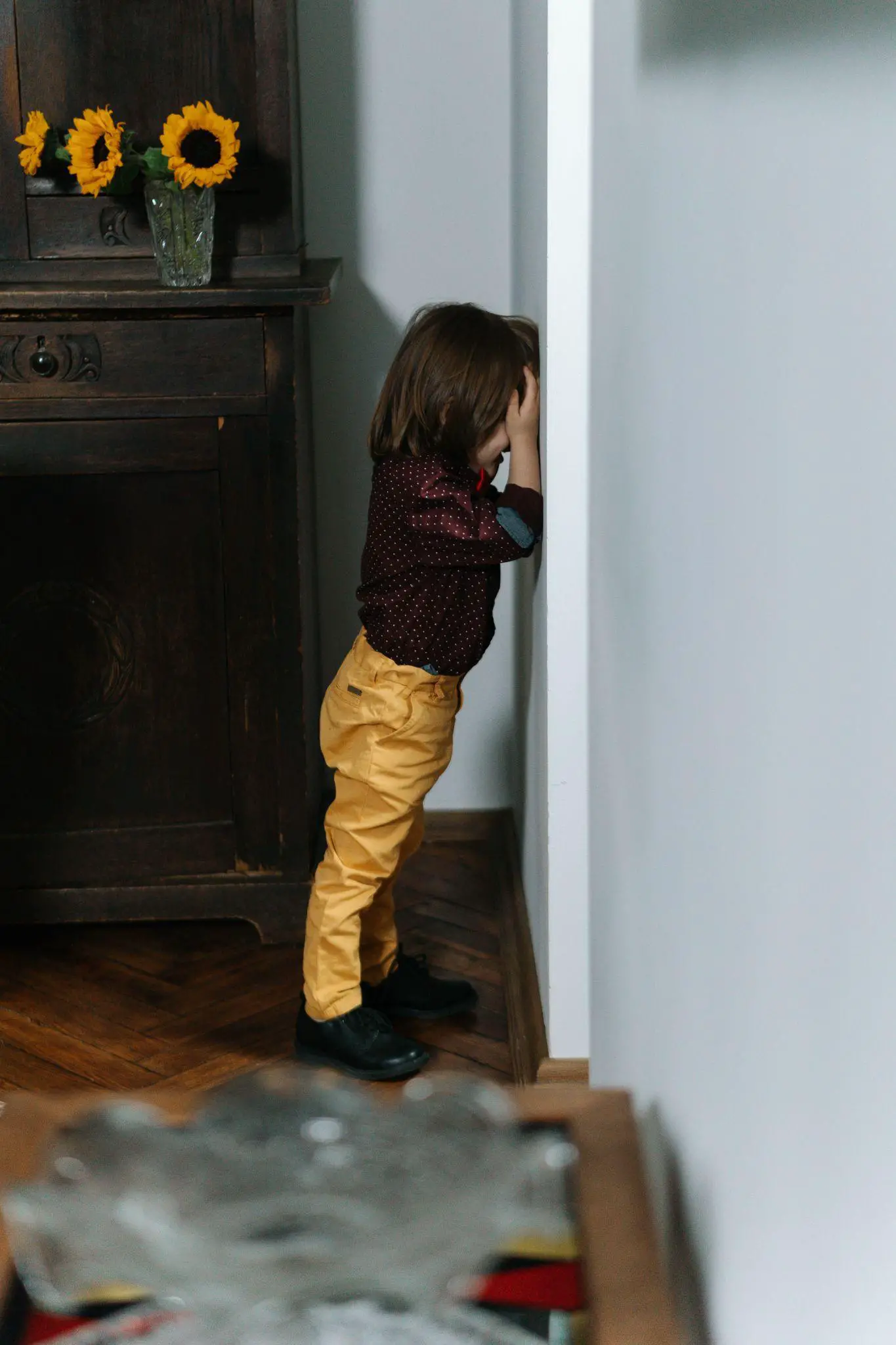Spanking is a controversial topic, but for some parents, it is an effective form of discipline. However, it is important to note that spanking should only be used as a last resort, after other methods of discipline have failed. When done correctly, spanking can be an effective tool to teach children right from wrong.
To start, it is important to understand that spanking should never be done out of anger or frustration. It should only be done when the parent is calm and in control of their emotions. Additionally, spanking should never be done in a way that causes physical harm or injury to the child.
When spanking a child, it is important to make sure that they understand why they are being spanked. This means that the parent should explain the reason for the spanking and make sure that the child understands what they did wrong. After the spanking, the parent should also take the time to talk to the child about what they can do differently in the future to avoid being spanked again.
- Understanding the Concept of Spanking
- The Controversy Surrounding Spanking
- Effective Discipline Strategies
- The Impact of Spanking on Mental Health
- The Effect of Spanking on Behavior
- Understanding the Role of Parents
- The Role of Pediatricians in Child Discipline
- Spanking and Its Legal Implications
- Alternatives to Spanking
- The Long-Term Effects of Spanking
- Conclusion
- Frequently Asked Questions
- What are some alternative forms of discipline for children?
- What are the long-term effects of spanking on a child?
- How can I effectively communicate with my child about their behavior?
- What are some positive reinforcement techniques for children?
- How can I create a safe and nurturing environment for my child?
- What are some effective ways to teach my child about boundaries and consequences?
Understanding the Concept of Spanking
Spanking is a form of corporal punishment that involves the use of physical force to discipline a child. It is a widely debated topic, with experts having varying opinions on its effectiveness and appropriateness.
While some parents believe that spanking is an effective discipline strategy, most experts advise against using corporal punishment. In fact, many studies have shown that spanking can have negative effects on a child’s mental health and behavior in the long run.
It is important for parents to understand that spanking is not the same as physical abuse. Physical abuse involves the use of excessive force that can cause physical harm to a child, while spanking is meant to be a mild form of punishment that does not cause injury.
When it comes to spanking, there are a few key principles that parents should keep in mind. First, spanking should only be used as a last resort, when all other forms of discipline have failed. Second, it should be done in a controlled and calm manner, without anger or frustration.
Parents should also be aware of the age and developmental stage of their child. Spanking may be more effective for younger children who have not yet developed the ability to reason and understand consequences. However, for older children, spanking may be less effective and may even cause resentment and rebellion.
In conclusion, while spanking may be a controversial topic, it is important for parents to understand the concept and principles behind it before deciding whether or not to use it as a form of discipline. Parents should also consider alternative forms of discipline, such as positive reinforcement and setting clear boundaries and consequences.
The Controversy Surrounding Spanking
Spanking is a form of corporal punishment that involves hitting a child on the buttocks with an open hand. While some parents believe that spanking is an effective way to teach children right from wrong, others argue that it is a harmful and ineffective form of discipline.
One of the main concerns surrounding spanking is the potential for it to lead to abuse. While spanking is intended to be a form of punishment, it can easily escalate into hitting or other forms of physical abuse. Research has also shown that spanking can have negative consequences on a child’s mental health, including increased aggression and anxiety.
Furthermore, many experts argue that spanking is an ineffective form of discipline. While it may stop a child’s misbehavior in the short term, it does not teach them why their behavior was wrong or how to behave differently in the future. In fact, research has shown that children who are spanked are more likely to engage in negative behaviors in the long term.
Despite these concerns, there are still many parents who believe that spanking is an appropriate form of punishment. Some argue that it is necessary to discipline children who are misbehaving, while others believe that it is a cultural tradition that should be respected.
Overall, the controversy surrounding spanking is complex and multifaceted. While there are valid arguments on both sides, it is important for parents to consider the potential consequences of spanking and to explore alternative forms of discipline that may be more effective in the long term.
Effective Discipline Strategies
Effective discipline strategies are essential for parents to maintain order and teach their children appropriate behavior. Spanking is a controversial discipline strategy, and many experts advise against using it. However, some parents believe that spanking can be an effective strategy when used appropriately.
Research shows that effective discipline is essential for children’s emotional and behavioral development. It helps children learn to make choices, control their aggression, and build trust with their parents. Effective discipline strategies also help children understand the natural consequences of their actions and promote logical consequences for misbehavior.
Alternatives to spanking include positive reinforcement, time-outs, and natural and logical consequences. Positive reinforcement rewards appropriate behavior, while time-outs remove the child from the situation and give them time to calm down. Natural consequences allow children to experience the natural outcome of their actions, while logical consequences are directly related to the misbehavior.
It’s essential to understand the child’s emotions and behavioral problems when choosing an appropriate discipline strategy. Parents should also explain the reasons for the discipline and provide clear expectations for the child to obey. Logical consequences should be appropriate for the child’s age and developmental stage.
Alternative discipline strategies can also be effective, such as setting clear boundaries, using positive reinforcement, and modeling appropriate behavior. Parents should also avoid using physical punishment, yelling, or shaming their children.
In summary, effective discipline strategies are essential for parents to maintain order and teach their children appropriate behavior. While spanking is a controversial discipline strategy, alternatives such as positive reinforcement, time-outs, and natural and logical consequences can be effective. Parents should understand their child’s emotions and behavioral problems, set clear boundaries, and avoid physical punishment, yelling, or shaming their children.
The Impact of Spanking on Mental Health

Spanking has been a widely debated topic among parents and experts alike. While some parents believe that spanking is an effective discipline strategy, most experts advise against using corporal punishment. Recent studies have shown that spanking can have negative impacts on a child’s mental health.
Research has long underscored the negative effects of spanking on children’s social-emotional development, self-regulation, and cognitive development. According to a recent study led by Harvard scientists, spanking affects children’s brain responses in ways that are comparable to severe abuse and heightens their perception of threats. This heightened activity in certain regions of the brains of children who experience abuse in response to threat cues can lead to mental health problems such as anxiety and depression.
In addition, a growing body of research shows that spanking can lead to aggression and mental illness later in life. One 2009 study showed that “harsh punishment” — defined as being struck with objects such as belts, paddles, or switches — was associated with increased odds of mood disorders, anxiety disorders, and alcohol and drug abuse.
It is important to note that while spanking may be effective in the short term, it can have negative long-term effects on a child’s mental health. Parents should consider alternative discipline strategies that do not involve physical punishment, such as positive reinforcement, time-outs, and removing privileges. These strategies can be just as effective in teaching children appropriate behavior while also promoting healthy mental development.
The Effect of Spanking on Behavior
Spanking is a form of punishment that has been used by parents for generations. However, the effectiveness of spanking as a means of disciplining children is a topic of ongoing debate. Some parents believe that spanking is an effective way to correct bad behavior, while others argue that it can do more harm than good.
Research has shown that spanking can lead to a host of behavioral problems, including aggression, defiance, and antisocial behavior. A study published in the Journal of Family Psychology found that children who were spanked frequently were more likely to exhibit aggressive behavior than those who were not spanked.
Another study published in the Journal of Pediatrics found that children who were spanked were more likely to have behavioral problems, such as anxiety, depression, and substance abuse, later in life. The study also found that children who were spanked were more likely to have lower IQ scores than those who were not spanked.
Spanking can also lead to feelings of frustration and anger in children. When children are spanked, they may feel humiliated, embarrassed, and powerless. These feelings can lead to a sense of resentment and anger towards their parents, which can further exacerbate behavioral problems.
In conclusion, while spanking may seem like an effective way to discipline children, it can actually do more harm than good. Research has consistently shown that spanking can lead to aggressive behavior, behavioral problems, and feelings of frustration and anger in children. Therefore, it is important for parents to find alternative methods of discipline that are more effective and less harmful to their children’s well-being.
Understanding the Role of Parents

When it comes to spanking, parents play a critical role in shaping their child’s behavior. It is important for parents to understand their role in the parent-child relationship and how they can use spanking effectively to discipline their child.
Parents are responsible for setting boundaries and rules for their child. They play a crucial role in shaping their child’s behavior and teaching them right from wrong. Spanking can be an effective tool for enforcing these boundaries and teaching children the consequences of their actions. However, it is important for parents to use spanking in a way that is safe, appropriate, and effective.
Dads and moms have different parenting styles and approaches to discipline. Some parents may choose to use spanking as a last resort, while others may use it more frequently. Regardless of the approach, it is important for parents to be consistent and clear in their expectations and consequences.
Effective discipline requires a balance of warmth and firmness. Parents should strive to create a positive and supportive environment for their child while also setting clear boundaries and enforcing consequences when necessary. This can help to build a strong and healthy parent-child relationship based on trust and respect.
In summary, parents play a critical role in shaping their child’s behavior and teaching them right from wrong. Spanking can be an effective tool for enforcing boundaries and teaching children the consequences of their actions, but it is important for parents to use it in a safe, appropriate, and effective way. By creating a positive and supportive environment, parents can build a strong and healthy parent-child relationship based on trust and respect.
The Role of Pediatricians in Child Discipline
Pediatricians play a crucial role in advising parents and guardians on effective discipline strategies to raise healthy children. According to the American Academy of Pediatrics, pediatricians are a trusted source of advice for parents and guardians concerning the management of child behavior, including discipline strategies that are used to teach appropriate behavior and protect their children and others from the adverse effects of challenging behavior.
Pediatricians should take a comprehensive approach when giving families advice on discipline methods that takes into account the parent-child bond, rewards for good behavior, and consequences for undesirable behavior. When suggesting disciplining techniques, pediatricians should also consider the child’s age, temperament, and developmental stage.
Pediatricians should advise against the use of corporal punishment, which is of limited effectiveness and has potentially deleterious side effects. There is a substantial body of factual data that supports the negative effects of corporal punishment, including the possibility of child physical abuse, impacts on brain development, issues with mental and emotional health in childhood, and issues with both physical and mental health in adulthood.
Pediatricians should also educate parents and guardians about the harms of corporal punishment and effective discipline strategies that do not involve physical punishment. These strategies may include positive reinforcement, time-outs, and logical consequences. By working with pediatricians, parents and guardians can learn effective discipline strategies that promote healthy child development and prevent the negative consequences of challenging behavior.
Spanking and Its Legal Implications
When it comes to spanking, it is important to understand the legal implications that may arise. While spanking is not illegal in most states, there are certain guidelines that must be followed to ensure that it is not considered child abuse.
Laws regarding spanking vary from state to state, but generally, it is legal to administer reasonable physical discipline to a child. However, if a parent goes beyond reasonable discipline and causes injury to the child, they may face criminal charges for assault, battery, child abuse, or domestic violence. The severity of the charges will depend on the extent of the injuries sustained by the child and the parent’s criminal history.
It is important to note that some states have banned spanking altogether. For example, California prohibits any form of physical punishment that causes harm or injury to a child, while other states such as Vermont and New Jersey have banned spanking in schools.
Parents who are unsure about the legality of spanking in their state should consult with an attorney or child welfare agency. It is also important for parents to understand that spanking can have negative effects on a child’s behavior and cognitive development, as well as their physical and emotional well-being.
In conclusion, while spanking is legal in most states, it is important for parents to understand the legal implications and to administer physical discipline in a reasonable and non-injurious manner. Parents should also consider alternative forms of discipline that do not involve physical punishment to ensure the well-being of their child.
Alternatives to Spanking

When it comes to disciplining children, spanking is a controversial topic. Some parents believe that spanking is an effective way to discipline their children, while others argue that it can lead to negative consequences. For parents who are looking for alternatives to spanking, there are several options available.
Praise and Positive Reinforcement
One effective alternative to spanking is to use praise and positive reinforcement. When a child behaves well, it is important to acknowledge and praise their behavior. This can help to reinforce positive behavior and encourage the child to continue behaving well. Parents can use verbal praise, such as saying “good job” or “well done,” or they can use nonverbal praise, such as a high-five or a hug.
Privileges and Rewards
Another alternative to spanking is to use privileges and rewards. Parents can offer their children rewards for good behavior, such as extra playtime or a special treat. This can help to motivate children to behave well and can also provide positive reinforcement for good behavior.
Time-Out
Time-out is another effective alternative to spanking. When a child misbehaves, parents can place them in a designated time-out area for a set amount of time. This can help to calm the child down and give them time to reflect on their behavior. Time-out can also help to reinforce family rules and expectations.
Communication and Age-Appropriate Language
Effective communication is key when it comes to disciplining children. It is important for parents to use age-appropriate language when talking to their children about their behavior. Parents should also be clear and specific when discussing the consequences of misbehavior.
Family Rules and Discipline Methods
Establishing clear family rules and discipline methods can also be an effective alternative to spanking. Parents should work with their children to establish rules and consequences for misbehavior. This can help to reinforce family values and expectations and can also provide children with a sense of structure and stability.
Last Resort
Finally, it is important to remember that spanking should only be used as a last resort. Parents should try other alternatives first and only use spanking if they feel it is absolutely necessary. When using spanking as a discipline method, it is important to do so calmly and firmly, without becoming frustrated or angry.
Overall, there are several alternatives to spanking that parents can use to discipline their children. By using praise and positive reinforcement, privileges and rewards, time-out, effective communication, clear family rules and discipline methods, and spanking only as a last resort, parents can help their children to behave better and develop positive behavior patterns.
The Long-Term Effects of Spanking

Spanking is a widely debated topic, with some parents believing that it is an effective discipline strategy. However, most experts advise against using corporal punishment, and research has found nothing positive to report about the long-term effects of spanking.
Studies have shown that physical punishment, such as spanking, can lead to negative consequences, including lower self-esteem, cognitive difficulties, and more negative relationships. In fact, a study reviewed over two decades of research on the effects of spanking and found that physical punishment leads to depression and anxiety in children and adults who were spanked.
Furthermore, spanking can worsen a child’s behavior and do real harm. A growing body of research shows that spanking can lead to aggression and mental illness later in life. One study showed that “harsh punishment” – defined as being struck with an object or spanked more than twice a week – is associated with an increased risk of criminal behavior and lower cognitive ability.
In addition, spanking can lead to shame and a lack of confidence in children. It can also lead to lying and a fear of being caught, as well as a fear of the person who is spanking them. This can damage the trust and bond between the parent and child.
It is important to note that physical punishments, such as spanking, should not be used as a first-line approach to discipline. Yelling, physical punishments, and other forms of negative reinforcement can have negative effects on a child’s brain development and overall well-being.
Parents should aim to be a positive role model and use positive reinforcement techniques, such as praising good behavior and setting clear expectations. Consistent rules, routines, and consequences can also be effective in shaping a child’s behavior. Bedtime routines, in particular, can help a child develop good judgment and self-discipline.
In conclusion, it is important to understand the long-term effects of spanking and to consider alternative discipline strategies. Parents should focus on building a strong, positive relationship with their child and using positive reinforcement techniques to encourage good behavior.
Conclusion
While spanking can be an effective form of discipline, it should be used sparingly and only in certain situations. It is important to keep in mind that spanking should never be used out of anger or frustration. Instead, it should be used as a last resort when other forms of discipline have failed.
Parents who choose to spank their children should make sure they are doing it correctly. This means using an open hand, avoiding hitting the child’s face or head, and not using excessive force. It is also important to make sure the child understands why they are being spanked and to follow up with positive reinforcement when they exhibit good behavior.
Ultimately, the decision to spank a child is a personal one that each parent must make for themselves. However, it is important to remember that spanking is just one tool in a parent’s disciplinary toolbox. It should not be the only form of discipline used, and it should always be used in conjunction with other forms of positive reinforcement and discipline.
Parents who are unsure about whether or not to spank their child should consult with a pediatrician or child development expert. They can provide guidance and advice on the most effective forms of discipline for a particular child, based on their age, temperament, and other factors. By using a combination of positive reinforcement, discipline, and love, parents can help their children grow into happy, healthy, and well-adjusted adults.
Frequently Asked Questions
What are some alternative forms of discipline for children?
While spanking is one form of discipline, there are many other effective ways to discipline a child. These include positive reinforcement techniques, such as praising good behavior, setting clear boundaries and consequences, and using time-outs as a way to give a child a chance to calm down and reflect on their behavior. It’s important to find a discipline method that works best for your child and your family.
What are the long-term effects of spanking on a child?
Research has shown that spanking can have negative long-term effects on a child, including increased aggression, anxiety, and depression. It can also damage the parent-child relationship and lead to a cycle of violence. It’s important for parents to consider alternative forms of discipline that do not involve physical punishment.
How can I effectively communicate with my child about their behavior?
Open and honest communication is key when it comes to discipline. It’s important to talk to your child in a calm and respectful manner, and to listen to their perspective as well. Avoid using accusatory language and instead focus on the behavior that needs to be addressed. It’s also important to set clear expectations and consequences for behavior.
What are some positive reinforcement techniques for children?
Positive reinforcement can be a powerful tool in teaching children good behavior. This can include praising good behavior, offering rewards for positive behavior, and using positive language to encourage good choices. It’s important to be consistent with positive reinforcement and to avoid using it as a bribe.
How can I create a safe and nurturing environment for my child?
Creating a safe and nurturing environment for your child involves setting clear boundaries, providing emotional support, and creating a sense of stability and routine. It’s important to create a home environment that is free from violence, abuse, and neglect, and to provide your child with the resources and support they need to thrive.
What are some effective ways to teach my child about boundaries and consequences?
Teaching children about boundaries and consequences is an important part of discipline. This can involve setting clear expectations and consequences for behavior, modeling good behavior yourself, and using positive reinforcement to encourage good choices. It’s important to be consistent with boundaries and consequences and to avoid using physical punishment as a means of discipline.




